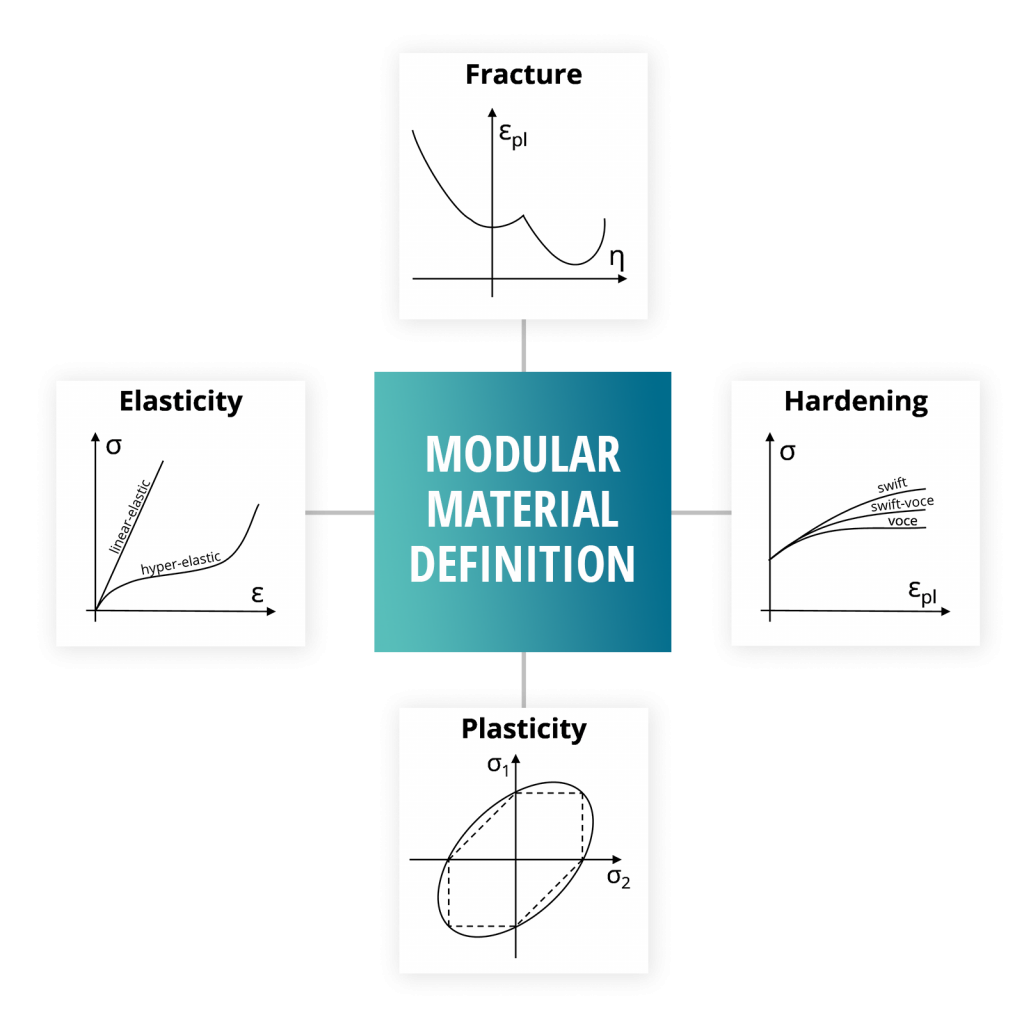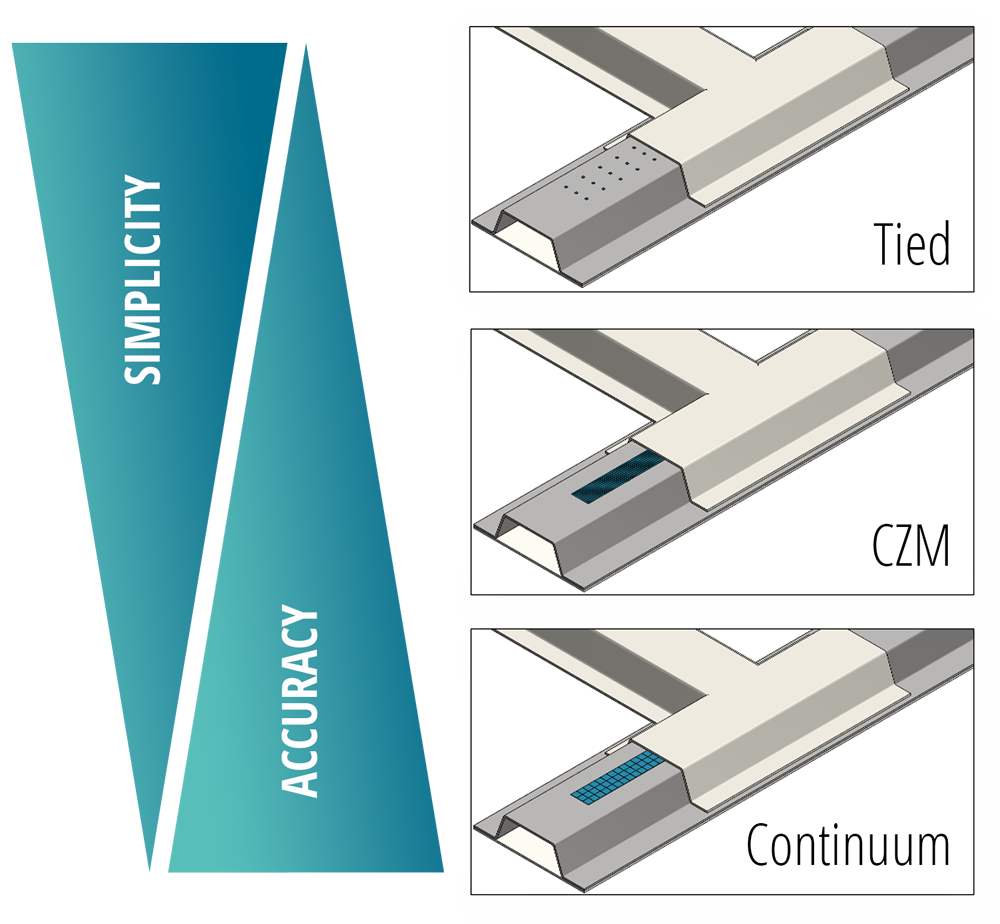MATERIAL AND CONNECTION MODELING
Due to increasing hybridization and the related trend towards the development of multi-material vehicles, modeling of new materials and accurate representation of the joints are becoming more and more important. High-quality modeling of materials and connections is the key to successful vehicle design. GNS can look back on a large number of completed projects in this field. The activities cover a broad spectrum, from the consideration of static and dynamic loading to the modeling of shell, solid and connection elements, and the consideration of solver-specific differences. In general, the activities can be divided into three main topics.

Material Models
We create material cards for Pamcrash, LS-Dyna and Abaqus in all qualities. This covers the whole range of material card generation from simple elasto-plastic to modular type with advanced failure models. User-specific criteria define the type and complexity of material models, such as the type of simulation (implicit, explicit), requirements for the component and prediction accuracy.
For material card generation, we use various in-house developed and customer-specific tools (e.g. MatGen) to fit yield curves and define the necessary failure parameters. This allows us to support our customers in accelerating the material development process and to develop concepts with new or previously unused materials, in cooperation with component manufacturers.
COMPOsites
Within the scope of various projects, know-how has been built up in connection with material characterization of fiber-reinforced plastics. This knowledge can be divided into the areas of short, long and continuous fibers as well as the characterization of surface layers. For this purpose, GNS creates both individual material models and cohesive zone models.
Short and long fiber‑reinforced plastics are often characterized by a fiber orientation with large local differences. The preferred directions of the fibers in the material can be determined by GNS in process simulations and mapped into structural simulations using mapping files.
Continuous fiber‑reinforced plastics are usually mapped by local or global fiber orientations. Both the ply structure and the anisotropic material properties can be characterized and validated.
In structural applications, the question of stiffness and strength of the connection to the metal structure often arises. Such a connection can be realized by direct joining or with adhesives, among other methods. In the simulation, cohesive zone models, which can represent stiffness and cohesive failure, have often been built for this purpose.
Connections
With special regard to the increasing hybridization of vehicles, the modeling of connections and the representation of their failure forces and energy absorption is one of our main research topics.
In this field, GNS focuses on the determination of suitable modeling techniques as well as on the development and validation of material cards. The activities cover all fields relevant to joining, from point and line‑shaped connections like spot welds, rivets or laser seams to planar joining elements like adhesives or special interfaces.
Especially for large models with different types of connections, the assembly can quickly become very time-consuming. In this field, GNS can rely on a large set of successfully developed customized tools, methods and processes that can significantly accelerate the model setup and substantially reduce modeling errors.
In addition to material modeling and the model setup, an accurate evaluation of the applied connections is essential to detect highly loaded or overloaded regions at an early stage. Together with our customers, GNS therefore develops tools and evaluation routines, which allow fast and detailed evaluations even for user-defined connection elements.





